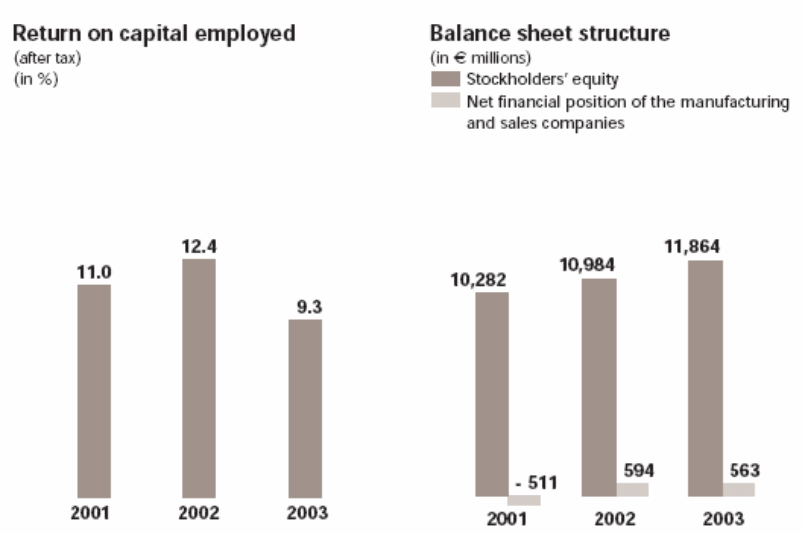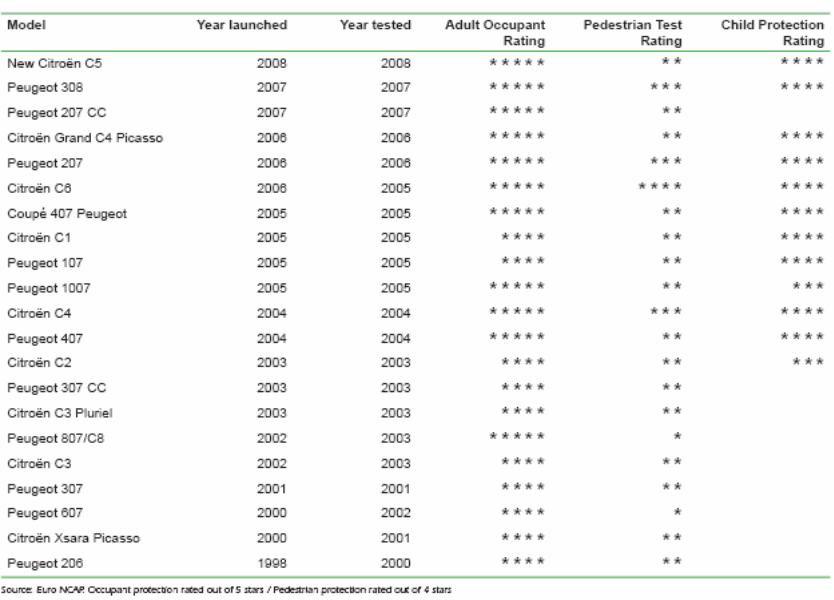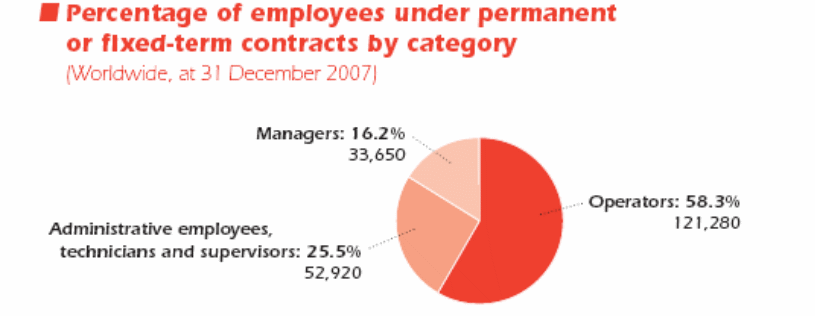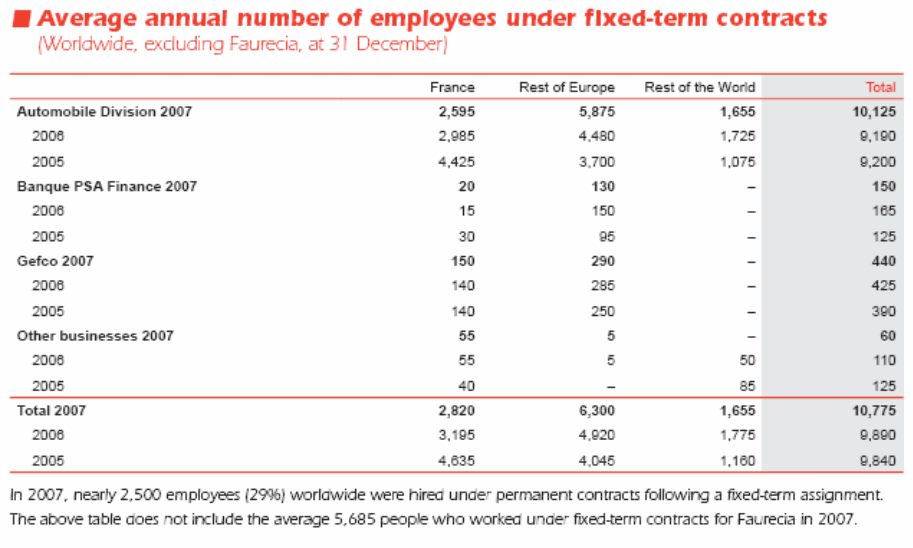Background of Peugeot Citroen’s investment Russia
The Chinese Automobile market has been flourishing from 2002. however, the country’s automotive sales have grown by 25 percent a year—up from 10 percent a year between 1997 and 2001—and in 2006 China overtook Japan, to become the world’s second-largest market for automobiles. What’s more, from 2001 to 2006, China’s vehicle exports rose by a remarkable 67 percent a year, to more than 340,000 units. Gone are the days when carmakers such as Shanghai Automotive Industry Corporation (SAIC) the first automobile works when Peugeot Citroen positioned second.1
Peugeot Citroen would like to invest US$ 140 million to produce the Citroen C3 for 150,000 units per year in Russia as well as its neighbor. This paper goes to investigate the feasibility study of the investment.2
Overview of Russian market
Multinationals have been satisfying Russian’s hunger for products that were in scarce supply in the old centrally planned economy since the breakup of the Soviet Union in 1991 though Russia is no longer virgin territory for the foreign manufacturer of consumer goods. Today’s true pioneers, intent on building market share in Russia in the face of fierce competition and realizing decent returns in what remains a perilous environment that already become household names.
Actually, driving the restructuring process in Russia, foreign manufacturers can help secure their own future through controlling critical links in the emerging industry chain and distribution for consumer goods companies. Prepare for keener competition, companies that thrive here will quickly seize opportunities to position themselves.
Low labour costs is the most important comparative advantage in developing countries or the new market economies of Eastern Europe vis-à-vis the advanced western countries. This constitutes perhaps the major factor for the ability of these countries to induce foreign multinationals to set up manufacturing operations – either through setting up “greenfield”, “turnkey” operations, or takeovers of majority shareholding, or joint-venture or minority shareholding in domestic firms. Labour costs being a small fraction of those obtaining in the advanced economies, foreign direct investment (FDI) and this paper, attempts to explain why the motor industry in Russia. Probably, this is the fact in Russia; the motor sector has attracted more interest from multinationals than any other industrial sectors. (Charles W. L. Hall 2007, p. 144)
Other factors such as relatively strong levels of education and skills of the workforce, high degree of basic manufacturing capability, significant market size (neighbor countries of Russia) with great potential for expansion, sufficient supplies of raw materials and energy, good geographic location that is on the border of Europe’s largest economy, government incentives etc. are also possessed by Russia. It’s especially mentionable that Russia is renowned for mining oil, gas and raw materials of car manufacture. These are the importance or background of multinationals in this case, China to consider setting up FDI operations in Russia but not major investment packages.3
SWOT analysis
Investment plan
Peugeot Citroen is a well know established brand in Russian market since 1990 and 19924. As Mother Company of PSA, Peugeot Citroen from French already sold 16,000 units of cars in Russia which is 3.9% of the total imported vehicles. For Model C4 and C5 in Russian Federation both Peugeot and Citroen’s subsidiary sold 9,251 & 6,922 cars respectively and gained strong reputation.
The present market data for Peugeot Citroen is as –
- PSA Peugeot Citroen: 3.9%
- 16,173 registrations (+ 29.8%)
- Peugeot: 2.2%
- 9,251 registrations (+ 14%)
- Citroen: 1.7%
- 6,922 registrations (+ 59.3%)
The present Investment Plan goes to setup plan for manufacturing C3 Models in Russian Federation5.
- PSA Peugeot Citroen drives to setup manufacturing facilities in Russia including
- Production facilities
- Models marketed
- Dealers and service network
- Peugeot: The entire line, except Expert.
- Peugeot: 39
- Citroen: 29
- Citroen: The entire line.
- Finance
The company does lead any financing actions in Russia. But now it wishes to invest in Russia and their amount of investment is $140 (million).
Site Selection
Selecting the site for the manufacturing plant is a most important issue for investment plant. It is vital requirement to set the plant in a location near to the prime market and well connected by road, air and water transport. It is also required to have local supply of low cost labour force. Kaluga is a Central Federal District city in the southwest bastion of Moscow the Capital of Russia. Kaluga is ancient city presently it turned into merchandising city on the bank of the Oka River. The city is deeply concerned with the historical, cultural and political life of Russia with available labour supply. Thus this investment plan would like to suggest Kaluga as the location of the manufacturing Plant.
Joint-venture of production plants
This Investment Plan would goes to investigate the scope of joint venture to execute the plant setup in Russia. The Mother Peugeot Citroen has its subsidiaries jointly owned with different carmakers in several countries. So Peugeot Citroen, China has the opportunity to look for joint ventures accounted in the same method of the mother company. The PSA Peugeot Citroën possesses five joint ventures worldwide where joint ventures, China are one automobile manufacturing of them. It joint efforts are as-
- TPCA is a joint venture with Toyota Motors in Czech Republic.
- DPCA is a joint venture with Dongfeng Motor Corp and XiangFan in China,
- Sevelnord is a joint venture with Hordain in France.
- Sevelsud is a joint venture with Fiat in Italy.
- Française de Mécanique is a joint venture with Renault in France.
Among all the joint ventures, PSA Peugeot Citroën Mother Company’s role is as an industrial partner as well as a shareholder. However, the mother company is supporting each venture as long-term development partner with finance, ISO 14001 certification and Global Social Responsibility Agreement
Product Profile
Citroën C-3 Model was development with the stylish new C3 compact rear door at the 2001and goes to market in 2002. It was line-up between the Saxo and the Xsara as an individual style with innovative design. The new features include two arches in succession of length of the body. Its smoothed flowing roofline generates a seamless link connecting the front and the rear at the same time as drawing attention to the height of the vehicle.
The model C3 offers loads of remarkable inner space with width of 1.67m and height is measured 1.52m. Its drawing has ensured that inhabitant do good to and from more head and elbow than in most different rivals’ practical vehicle.
For present Russian Market for C3 existence on more easily more comfortable and safer huge demand for it. Its stipulation will include the ease of use of a large automatic operate window, automatic air conditioning, sunroof along with all the benefits of complex wiring. It also holds mechanical rain-sensitive windshield wipers, instrument lighting as well as automatic activation that features high demand in Russia..
Marketing plan
International marketing is conducted, focusing on the marketing, government, legal, economic, structural, informational and technological, and socio-cultural environment. Selling and buying is not the motto of marketing, they are the ice berg of marketing.6 Marketing is a social process in which a set of potential buyers buy goods and services to meet up their need, want and demand. For a successful international business movement “Peugeot Citroen” provide following methodology to implement their marketing plan in Russia as the part of their international business-
Advertising, communication and consumer information: These three segments of marketing plan of “Peugeot Citroen” is conducted by following heads-
- Regulations concerning advertising, marketing, labeling and consumer information with no-compliance- Advertising, marketing, labeling of product or consumer information reported by sales subsidiaries in six countries- Germany, Italy, Russia, and Brazil for Peugeot and Italy, the UK and Argentina for Citroen. If these incidents resulted in fines, the Peugeot subsidiary would be fined for false advertising and is considering an appeal and the Citroen would be fined for misleading advertising. The amount of fine would be $15,000 for incidents occurring and an appeal is now underway. The “Advertising Standards Authority & PCA” has the authority to suspend an advertisement at the request of Brazilian authorities and subsidiary would have changed an advertisement following a warning from the authority.
- Consumer information and labeling: Ahead of the regulatory deadline, Peugeot and Citroen provide their dealers with fuel-efficiency labels in early 2006 to improve car buyer information. Each model’s average fuel consumption and carbon emissions would be displayed by labels based on the model’s CO2 emissions per kilometer from A to G the indicator of carbon ratings to introduced new environmentally friendly cars.
- Responsible communication charter: By a responsible communications working group, jointly led by the two brands and comprising representatives from the Sustainable Development Department, Corporate Communication, Customer Relations and Legal Affairs departments, as well as from the two brands’ Marketing and Advertising Department a group responsible communications charter was developed during the year7. Supported by awareness building programs regardless of target audience, media or country, social responsibility standards for any advertising produced by the group, the brands, regional offices or dealer networks.
Financial plan
For foreign direct investment (FDI), a company’s financial plan must contain following feature-
- Investment decisions: A decision to invest in activities in a given country must consider many economic, political, cultural, and strategic variables. One role of the financial manager in an international business is to try to quantify the various benefits, costs, and risks that are likely to flow from an investment in a given location (Russia). This is done by using capital budgeting techniques8.
- Capital budgeting: Capital budgeting quantifies the benefits, costs, and risks of an investment. This enables top managers to compare, in a reasonably objective fashion, different investment alternatives within and across countries so they can make informed choices about where the firm should invest its scarce financial resources. Capital budgeting for a foreign project uses the same theoretical framework that domestic capital budgeting uses that is the firm must estimate the cash flows associated with the project over time. In most cases, the cash flows will be negative at first, because the firm will be investing heavily in production facilities. After some initial period, however, the cash flows will become positive as investment costs decline and revenues grow.
- Project and parent cash flows: argument exists for analyzing any foreign project from the perspective of the parent company because cash flows to the project are not necessarily the same thing as cash flows to the parent for a number of reasons. When evaluating a foreign investment opportunity, the parent should be interested in the cash flows it will receive as opposed to those the project generates because those are the basis for dividends to stockholders, investments elsewhere in the world, repayment of worldwide corporate debt, and so on. Stockholders will not perceive blocked earnings as contributing to the value of the firm, and creditors will count them when calculating the parent’s ability to service its debt9.
- Adjusting for political and economic risk: When analyzing a foreign investment opportunity, the company must consider the political and economic risks that stem from the foreign location. Political forces will cause drastic changes in a country’s business environment that hurt the profit and other goals of a business enterprise. Political risks tend to be greater in countries experiencing social unrest or disorder and countries where the underlying nature of the society makes the likelihood of social unrest high. When political risk is high, there is a high probability that a change will occur in the country’s political environment that will endanger foreign firms there.
As with political risk, first encountered the concept of economic risk and economic mismanagement will cause drastic changes in a country’s business environment that hurt the profit and other goals of a firm. In practice, the biggest problem arising from economic mismanagement has been inflation. The result has often been too much money chasing too few goods, resulting in price inflation.
HRM plan
It is well known that human resource management (HRM), the management functions through which managers recruit, select, train, and develop organization members or personnel’s. It’s the traditional view of human resource management and pointing out how HRM can assure the organization of an adequate and constant supply of skilled employees. To reach or achieve the company’s goal in this case the company needs to set up its HRM plan as follow-
Managing human resources internationally
Specific functions within an international business, looking at international human resource management (HRM) refers to the activities an organization carries out to use its human resources effectively. These activities include determining the firm’s human resource strategy, staffing, performance evaluation, management development, compensation, and labour relations. None of these activities is performed in a vacuum; all are related to the strategy of the firm. HRM has an important strategic component through on the character, development, quality, and productivity of the firm’s human resources10.
The strategic role of HRM is complex enough a domestic firm but it is more complex in an international business, where staffing, management development, performance evaluation, and compensation activities are complicated by profound differences in labour markets, culture, legal systems, economic systems. To build a cadre of managers capable of leading a multinational enterprise, the HRM function must deal with a host of issues. It must decide-
- How to staff key management posts in the company?
- How to develop managers so that they are familiar with the nuances of doing business in different countries?
- How to compensate people in different nations?
- How to evaluate the performance of managers based in different countries?
HRM must also deal with a host of issues related to expatriate manager, is a citizen of one country who is working abroad in one of the firm’s subsidiaries. It must decide when to use expatriates, whom to send on expatriate posting, be clear about why they doing it, compensate expatriates appropriately, and make sure that they are adequately debriefed and reoriented once they return home. Between 2001 and 2007 the international workforce rose by nearly 37%.
- Responsibly managing fixed-term contracts: Example, PSA Peugeot Citroen is applying the charter governing working conditions for temporary workers in France, along with seven temporary employment agencies. Following a temporary assignment with the group under permanent contracts, nearly 760 people (9%) were hired worldwide in 2007. Temporary workers will enjoy the same working conditions as regular employees it also guarantees.11
- Enhancing work-life balance: With individualized solutions that align employee needs with efficient team performance and these solutions include working part of a day or half-day, working a reduced number of total hours, and working every other week. Nearly 9,200 employees worked part-time worldwide during 2007 of which 1,830 worked half-time and 42.3% were women and 57.7% were men of the total.
- Categories of employment: Employment can be segmented as bellow-
- Under fixed-term contracts
- Temporary workers
- Part-time workers
- By continent employees under permanent or fixed-term contracts
- Working on group sites of contractor employees.12
- International hiring: Solely on the basis of their skills in a commitment to equal opportunity and diversity, hiring local managers is enhancing the group’s international profile by enabling the creation of multi-cultural teams and the development of international careers, supported by the job track process. To support the growth of local operations, while others were hired in sales subsidiaries in every host region around the world, automobile, finance, and transport & logistics divisions are nationals.
Different recommendations (Advantages & Disadvantages)
Conclusion
The following matters with respect to the reporting of the group’s social data:
- Application of reporting standards by some of the visited PCA and Gefco units, concerning subcontractor employee indicators, primarily due to difficulties in compiling the related data disparities in review.
- For the “Training Expenditures” and “Safety and Prevention Expenditures” indicators omissions and differing interpretations by some of the visited PCA and Gefco units concerning the expenditures to be reported. Concerning the expenditures to be reported the environmental data by the Citroen and Peugeot brands for the first time in 2007 as bellow-
Interpretations and applications of the reporting standards for the indicators concerning energy and water consumptions and waste production differ and this reflected the fact that the methodological guidelines for compiling the data were too vague.
Data compiled by the dealerships were validated, consistency checks were not systematically performed by the subsidiary’s validator in every country with the exception of the matters described in the preceding paragraphs, nothing has come to attend that causes to believe that the processes used to compile the site environmental data and group social data identified13.
Above all a decision can be reached that investment plan for Peugeot Citroen the second largest carmaker set up an aim to produce the Citroen C3 for 150,000 units a year and sell them in Russia and its neighbor countries bring profit for the company. Therefore, the company can easily invest in Russia and introduce its market an environmental friendly motorcar and start their operations as an international car company in Russia.
Bibliography
BBC News (2007), Renault buys stake in Lada owner. Web.
Charles W. L. Hall (2007), International Business competing in the Global Marketplace, 6th edition, McGraw-Hill New York, ISBN”10-007-110671-5, pp. 143-167, pp. 351-379.
Gao, P. (2008), A Global Road Map For China’s Automakers, The McKinsey Quarterly, issue, pp. 267-273.
Mcconnel, C. R., and Brue, S. L. (2005), Economics-Principles, problems & policies, 16th Edition, McGraw-Hill International Edition, Singapore, ISBN: 007-124914-1.
Pandey, I. M. (2007), Financial Management, 9th Edition, Vikas publishing house PVT LTD, New Delhi, ISBN: 81-259-1658-X.
PSA Peugeot Citroen (2006), Market overview: Russia. Web.
PSA Peugeot Citroën (2004), 2003 Annual Report, Paris, pp 7-47.
PSA Peugeot Citroën (2008), Sustainable Development Indicators-2007, pp. 23-102.
The Citroën (2008), Citroën Models. Web.
Appendix






Footnotes
- PSA Peugeot Citroën (2004, pp 17).
- Gao, P. (2008, p. 267).
- Charles W. L. Hall (2007, pp. 143-167).
- PSA Peugeot Citroën (2008, p-72).
- PSA Peugeot Citroën (2008, p. 73).
- PSA Peugeot Citroën (2008, p-36).
- Mcconnel, C. R., and Brue, S. L. (2005, p. 246).
- Pandey, I. M. (2007, pp. 457).
- Pandey, I. M. (2007, pp. 458).
- PSA Peugeot Citroën (2004, p. 27).
- Pandey, I. M. (2007, p. 447).
- Pandey, I. M. (2007, p. 448).
- Mcconnel, C. R., and Brue, S. L. (2005, p. 216).